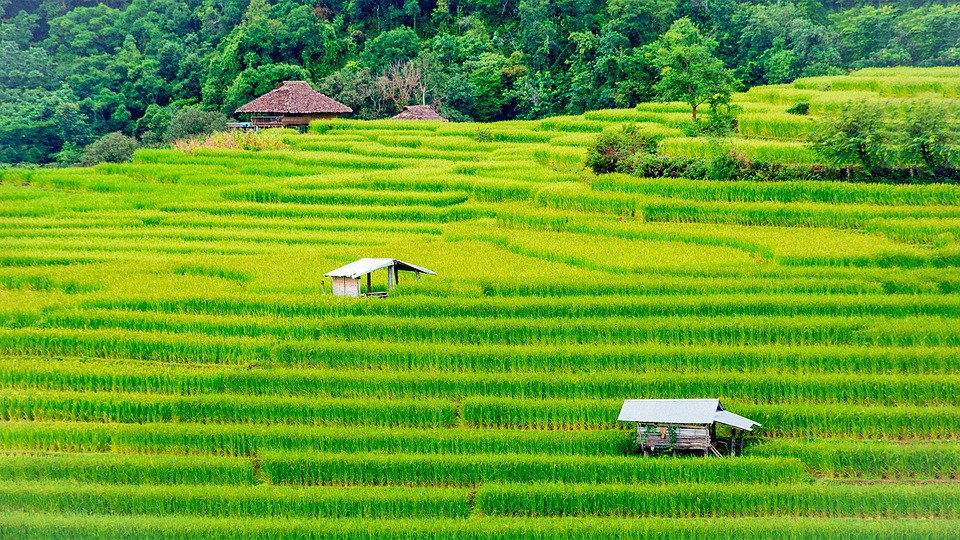
For many decades Chinese agriculture has struggled to meet a growing and demanding population. The Chinese agricultural scene has two major problems: 1) much of its farming soil is not as arable to production as the US, and 2) more than four fifths of Chinese Ag lands are divided into small farms of less than 10 acres. Both these issues have been recognized by the Chinese government, however, and recent major changes have been taken.
Both of these issues directly affect Chinese ability to continue to grow and supplement its population, especially as its middle class continues to rise. Farms simply need to be bigger, better, and more efficient, but with more than half the Chinese population still being agrarian, the Government is slow to implement change.
One major change is that of small farms in China now taking steps to consolidate certain farms into larger collectives. As farmland cannot be personally owned in China, this is a process allowed and overseen by the government. However, as Bloomberg reported last year, the Chinese government was allowing these collectives to also band together and lease land management to other companies while they pay an annual rent. This will allow the Chinese agricultural industry to become more efficiently used as well as implement larger machine and technology farming than previously done. And already, business is booming.
Additionally, food safety and quality have been notorious concerns in regard to Chinese agriculture; but this too seems to be on the radar of the newer Chinese farmer, as they also implement stronger food safety and pesticide programs than previously put forth. In fact, the Chinese Ag industry nearly a decade ago was blamed for surface water pollution, even more so than industry as reported by a survey from the World Bank Report in 2010. If these implementations make huge waves in the Chinese market demand for foreign goods remains to be seen; however, larger farms have been growing and utilizing stronger safety programs than ever before seen. So it may just be a matter of time before we see a larger dependence of the Chinese with their own farming operations, and less on foreign inputs.
A major concern was the amount of arable and crop friendly land in China as well as farming practices to nurture that land better, more efficiently, and safer. Chinese farm land has been a bit behind practice and land management to the US standard. A recent 10 year completed study and research project has addressed the sustainability of Chinese agricultural practices, s well as taught Chinese farmers how to increase production and better utilize land management practices. Farmers were taught enhanced techniques, and this last year alone yields have already been seen of more than 10% on crops such as maize, rice, and wheat. At the same time, nitrogen use was seen to decrease more than 14%. Quartz reports that the project has already saved the Chinese more than 12 billion dollars over the 10 year study. This study was undertaken with the use of the small sized farms mentioned previously. There is not telling what the Chinese economy may be capable of in larger farm productions.
 Though much of the good farm lands have been allocated to other purposes, such as urban developments, there remain pockets throughout China suitable for Ag industry. In order to grow more arable lands for farming, the Chinese government has also been investing in huge networks of canal and dam building programs in order to grow these pockets into larger commercial farming structure. This will again allow for an entirely new form of farming to be seen throughout China, one more akin to our own industrial farms in the US.
Though much of the good farm lands have been allocated to other purposes, such as urban developments, there remain pockets throughout China suitable for Ag industry. In order to grow more arable lands for farming, the Chinese government has also been investing in huge networks of canal and dam building programs in order to grow these pockets into larger commercial farming structure. This will again allow for an entirely new form of farming to be seen throughout China, one more akin to our own industrial farms in the US.
Ironically, Chinese farmers, even though accounting for so much of the Chinese country, have been severely hurt by influxes out of it from their own children. Their children, seeking better opportunity, migrated from the country side to the city, leaving the home farms manned by elders, if not completely abandoned. This additionally puts the once family farming industry in the prime market for takeovers from larger business farms in the Chinese hierarchy.
With the threats looming from tariffs, and the world demand for food expectant to double within the next 30 years, there is a lot to consider with the sleeping dragon that might very well be Chinese agriculture. Where will the US be in competition if the Chinese are able to compete at the same level?

